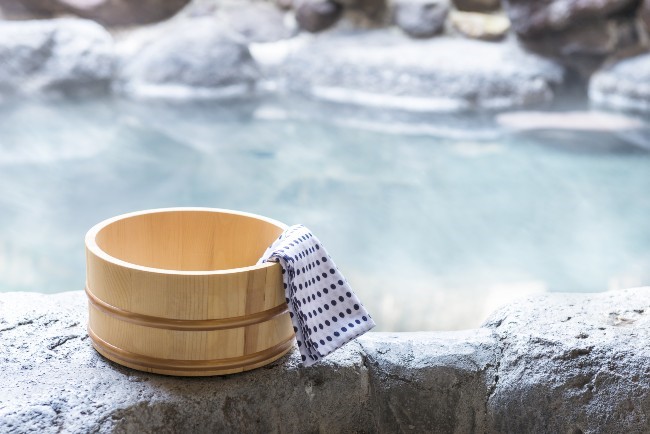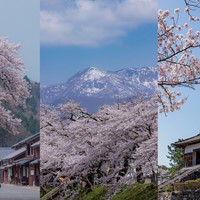Onsen Etiquette in Japan: Rules and Manners

Nothing beats the soothing effects and cultural experience of visiting a Japanese hot spring (Onsen). A trip to an onsen in Japan is a highly recommended experience appreciated by visitors and new foreign residents alike to really absorb the local lifestyle. Indoor baths, enormous outdoor open-air pools known as rotenburo, and even public footbaths are all forms of onsen. Because most non-Japanese are unfamiliar with onsen, many people are hesitant to attempt it.
Many people stay away because they are concerned about politeness, modesty, and other misconceptions. Whether you are a cautious first-timer or ready to take the leap, you can learn about Japanese onsen etiquette by watching the video below or reading this article which will explain Japanese onsen etiquette in 6 easy steps as well as provide information on alcohol and tattoos in the context of hot springs in Japan. You can also find many other articles about Japanese manners and etiquette here.
If you are ready to utilize your knowledge of onsen etiquette, visiting Atami in Shizuoka Prefecture with its popular hot springs can be a very enjoyable experience. Atami is easily accessible from Tokyo and you can read about this coastal gem in the following article: "Discovering Atami: Japan's Coastal Gem of Hot Springs, Culture, and Natural Splendor". While there are many hot springs available for a day use in Japan, staying at one of the Japanese traditional lodgings with onsen can be especially recommended. Hotel booking websites will provide you with many options for your stay when traveling in Japan. You can find a list of such websites in the article "Travel in Japan: Hotel Booking Websites".
Video about Japanese Onsen Etiquette
Onsen Etiquette in 6 Easy Steps
1. Enter via the appropriate (gender-specific) entrance

Remove your shoes and place them in a locker inside the front entrance while visiting an onsen. There will be a front desk where you may pay the entry charge according on the services you wish to utilize, as some onsen now provide food, games, and other activities in addition to the bath. After your bath, you can obtain a cotton kimono called a yukata, which comes in a variety of colors and styles at larger facilities.
It's worth noting that there are generally two entrances, one of which is color-coded and the other of which uses solely Japanese characters as a guide. While some onsen include places where men and women can rest together while robed, keep in mind that modern Japanese baths are completely gender segregated! If you aren't guided to a gender-specific one first, please double-check where you're intended to go before entering to avoid undue humiliation for yourself and others.
2. Use Towels Correctly

One medium bath towel to keep in your locker for drying off afterward, and one smaller towel to use within the bathing area are generally given. These are similar to sports towels, which is convenient because you won't need or want to carry a large towel around while enjoying the onsen. As strange as it may seem, properly using such towels is a crucial element of how to bathe in Japan! People frequently wash with them before entering, thus keeping them out of the bath water is regarded simply polite—people commonly wear them on their heads while in the water and in their laps when sitting.
3. No swimsuits

Onsen can be experienced without the use of swimsuits or other clothing. Please change and proceed to the pre-onsen shower area in the locker room. Put your personal stuff in a locker. On a plastic basket, a small key is commonly spotted. You retain your key on your wrist while you wash and bathe.
4. Before bathing, wash

Before entering and relaxing in the tubs, properly wash your body. Because the baths are utilized by everyone, this is an important aspect of onsen etiquette! There will be showerheads with tiny buckets of water, small stools to sit on while cleaning, and luxuries such as shampoo, conditioner, and body wash.
5. Bathe More, Talk Less
If you feel too hot in an onsen, you may take pauses by sitting up on the edge. Allow the natural minerals and relaxing hot water to perform their magic. Of fact, there is no explicit tenet of onsen etiquette that bans chatting, but these are tranquil spaces designed for de-stressing and calming down. This is a fantastic time to relax and unwind in the warm, relaxing waves.
6. Take Only What you Came in With

You may take an extra shower after bathing. Other service goods, like as hairdryers, skin creams, combs, and toothbrushes, are frequently found back in the changing rooms. In contrast to hotel facilities, onsen etiquette requires that reusable things such as hairbrushes be sterilized so that other guests can use them afterwards. If your onsen supplied yukatas, there may also be a rest lounge with refreshments, TVs, and even massage chairs. You would be able to walk around these particular public places while wearing your yukata. When you've had your fill of the facilities, return to your changing room and put your clothes back on. There are baskets where you may leave your yukata and towels.
Tattoos and Alcohol
In addition to the above onsen rules, a brief note is needed about alcohol and tattoos. In reality, tattoos in onsen are prohibited due to their long history of association with Japanese mafia, a stigma that continues today. That said, if your tattoo is easily covered with a bandage of some kind or if it is easy to hide you might be fine. The good news is that, in an effort to make onsen more accessible to foreign travelers there is some movement by the government, the tourism organizations, and some onsen areas to change the thinking about tattoos and onsen. Some onsen groups like Hoshino Resorts have even created stickers to cover your tattoo, instituting a rule that people can go to onsen if they can cover their tattoo with a single sticker of 8cm✕10cm. Getting a sticker to cover your tattoo is only good onsen manners. If you have a tattoo, it can be recommended to visit one of the tattoo-friendly onsens in Japan. You can find more information in our article about "15 Best Tattoo-Friendly Onsens in Japan."
Although onsen etiquette does not prohibit drinking alcohol before entering a hot spring, let alone during the experience, it can be hazardous; consuming spirits before entering a hot spring—let alone during the experience—increases the risk of thrombosis. For your personal safety and the tranquillity of others, most onsen sites serve beer, sake, and wine with the evening meal or even in the post-bath resting rooms, so save the drinking till after a relaxing hot soak.
Water should be the only beverage consumed by Japanese bathers. If you have high blood pressure, it's a good idea to take a bottle of water before and after coming to the onsen. Not only that, but drinking water while in the hot tub will keep you hydrated.
















